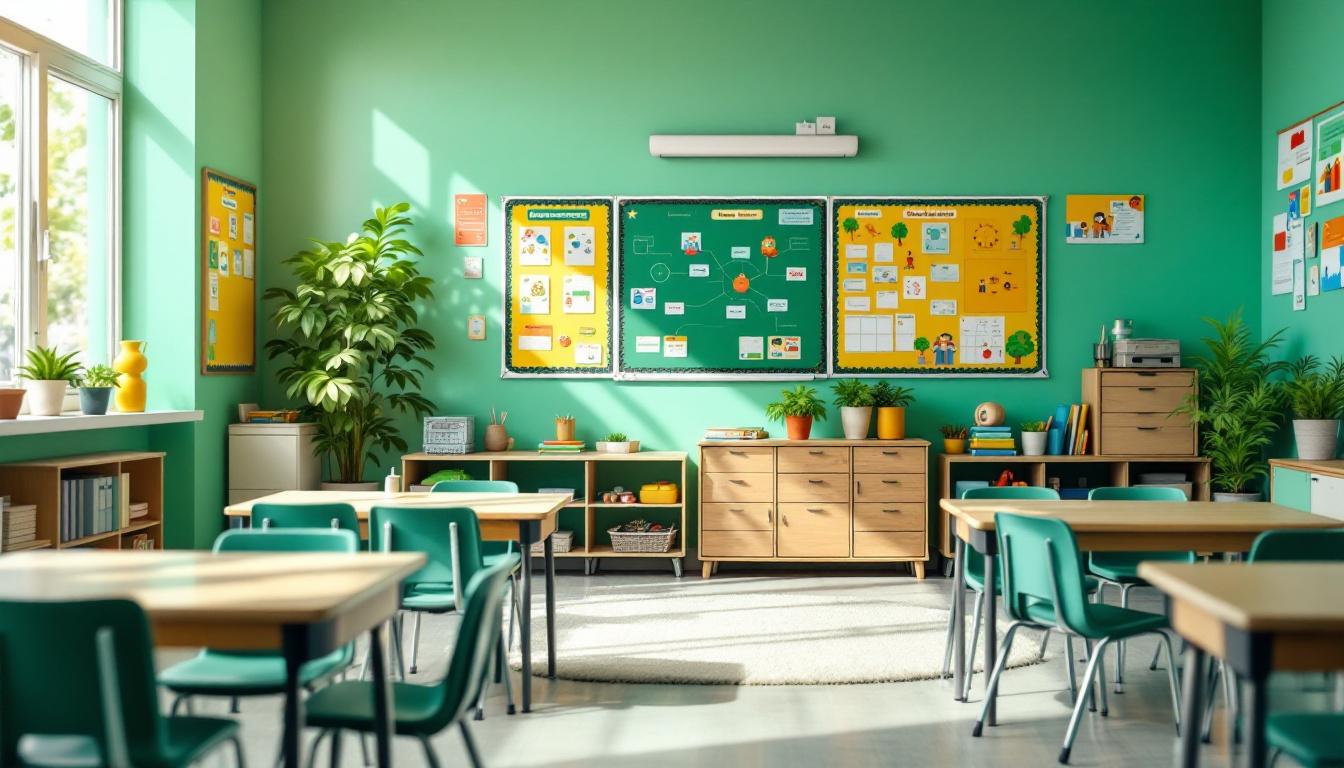Using ABA to teach daily living skills
Empowering Independence Through ABA Strategies

Unlocking Daily Living Skills for Autism
Applied Behavior Analysis (ABA) is a scientifically supported, flexible approach that effectively teaches daily living skills to individuals with autism spectrum disorder. It employs a variety of evidence-based techniques to help individuals gain independence, improve self-care, and enhance overall quality of life. This article explores how ABA can be harnessed to develop essential life skills, the methods involved, and practical guidance for caregivers.
Foundations of ABA in Teaching Daily Living Skills
What is ABA?
Applied Behavior Analysis (ABA) is grounded in the science of learning and behavior. It uses structured, evidence-based strategies, such as reinforcement, task analysis, prompting, shaping, and generalization, to teach everyday skills. ABA aims to increase helpful behaviors and reduce harmful or problematic ones by understanding how behavior is influenced by the environment. The therapy involves continuous data collection to monitor progress and tailor interventions to each individual.
How does ABA support individuals with autism?
ABA helps children and adults with autism develop critical skills needed for independence and social participation. These include communication, social skills, personal hygiene, dressing, meal preparation, household chores, and safety awareness. Through systematic teaching methods like discrete trial training (DTT) and Natural Environment Teaching (NET), ABA enables learners to transfer skills across settings, promoting lasting independence.
Principles of ABA and Learning Science
ABA is based on principles such as positive reinforcement, which motivates learners by rewarding desired behaviors. Techniques like chaining break down complex tasks into manageable steps, ensuring mastery at each stage. Visual supports, picture sequences, and prompts facilitate learning of structured routines and multitask activities. Importantly, ABA emphasizes generalization to ensure skills are used across different environments, enhancing real-world functioning.
Goals of ABA in Daily Life Skills
The primary goal of ABA in daily living skills is to foster independence. This includes self-care (e.g., brushing teeth, dressing), domestic tasks (e.g., making beds, washing dishes), and safety skills (e.g., recognizing hazards). ABA also addresses organizational skills like using visual schedules and managing time. Success is measured by progress in skill acquisition, behavioral improvements, and overall enhancement in everyday life, leading to improved self-esteem and quality of life for individuals with autism.
Assessment and Goal Setting in ABA for Daily Living Skills

Use of assessment tools like ABLLS and Vineland scales
Before beginning targeted interventions, professionals use comprehensive assessment tools such as the Assessment of Basic Language and Learning Skills (ABLLS) and the Vineland Adaptive Behavior Scales. These assessments help evaluate a child's current skills in areas like communication, self-care, socialization, and motor abilities. The results provide a detailed understanding of the child's strengths and areas needing growth.
Writing measurable and achievable goals
Based on assessment data, individualized goals are created. These goals are formulated in clear, measurable terms — for example, "Child will independently brush teeth twice a day" or "Child will dress with minimal prompts across settings." Measurable goals allow therapists and caregivers to monitor progress objectively, ensuring that each step toward greater independence is tangible and attainable.
Importance of individualized planning
Every child with autism exhibits a unique profile of abilities and challenges. Personalized plans ensure that interventions are relevant and tailored to the child's specific needs, interests, and environment. This customized approach promotes motivation, improves the effectiveness of learning, and enhances the likelihood of skills generalizing across different settings like home, school, and community.
How are goals developed in ABA for daily living skills?
Goals are crafted through thorough assessments that highlight growth areas. Therapists set specific, measurable benchmarks for progress, emphasizing functions like hygiene, dressing, or household chores. These goals serve as clear targets, guiding intervention strategies and helping families track improvements over time.
Why is individualized planning important?
Customized planning respects each child's unique learning style and developmental level. It ensures that goals are realistic and relevant, increasing the child's engagement and success rate. Personalized strategies also facilitate better transfer of skills across different environments, fostering greater independence.
| Aspect | Details | Benefits |
|---|---|---|
| Assessment Tools | ABLLS, Vineland | Identify skill levels, tailor goals |
| Goal Writing | Measurable and achievable | Clear progress tracking |
| Personalization | Individual strengths and challenges | Effective, motivating interventions |
| Skill Areas | Communication, self-care, social | Promotes independence and quality of life |
| Environments | Home, school, community | Supports generalization |
By integrating thorough assessments and individualized plans, ABA therapy effectively promotes meaningful and sustainable development in daily living skills for children with autism.
Implementation Techniques for Teaching Daily Living Skills
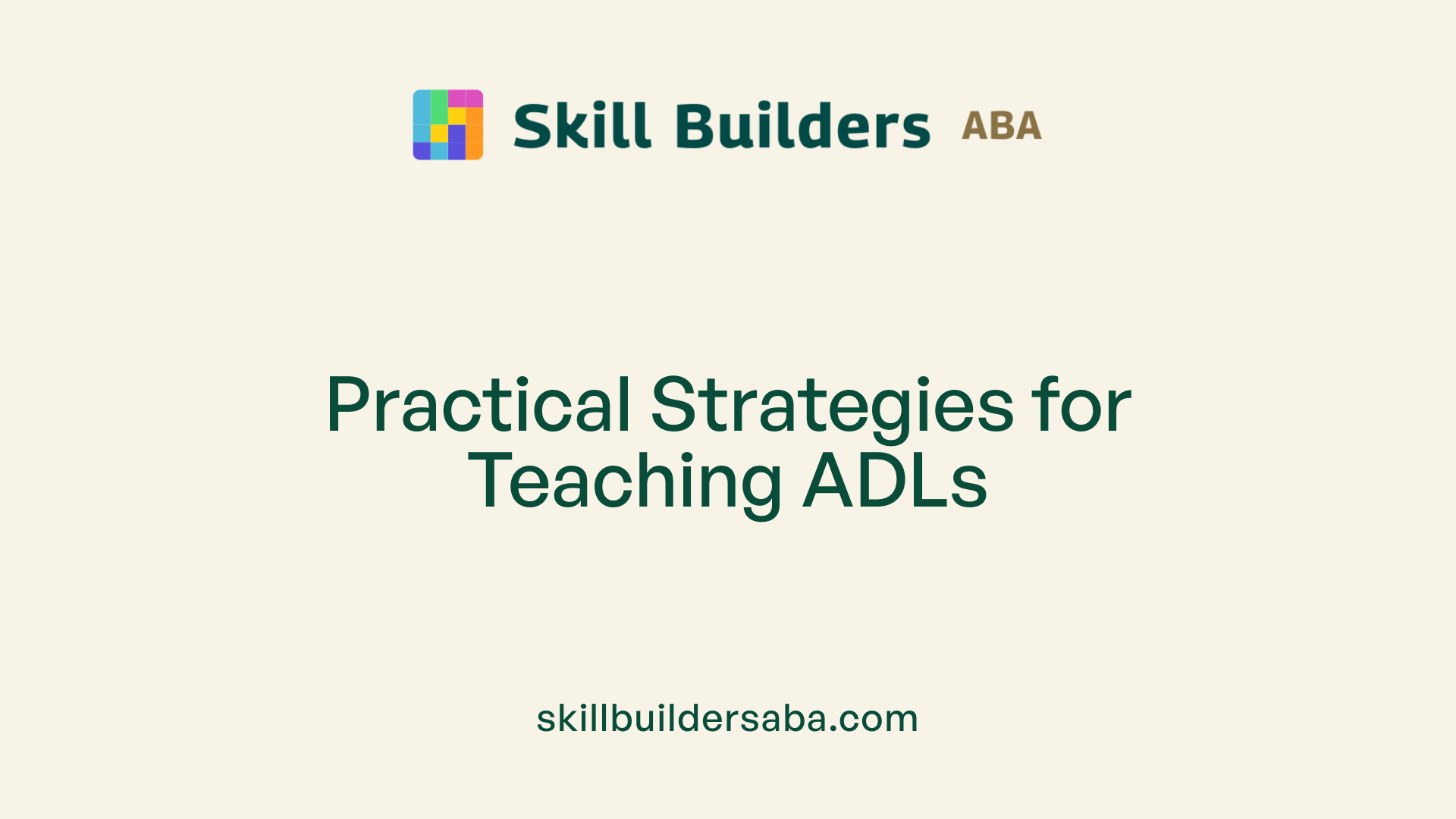
How is ABA implemented in everyday settings?
Applied Behavior Analysis (ABA) is integrated into daily life by practicing skills within natural environments such as home, school, and community settings. This approach involves using Natural Environment Teaching (NET), a method that makes learning relevant to real-life situations. By practicing skills in these familiar settings, individuals are more likely to generalize their new skills across different environments, which enhances their independence.
For example, a child might practice making choices during mealtime at home or navigate a store with support, applying learned behaviors in authentic situations. This naturalistic approach helps to foster genuine skill development and increases the likelihood that behaviors will be maintained over time.
What are some specific ABA techniques used?
Several targeted strategies support effective teaching of daily living skills:
| Technique | Description | Example |
|---|---|---|
| Task analysis | Breaking down complex tasks into smaller, manageable steps. | Teaching how to brush teeth by dividing into steps like picking up the toothbrush, applying toothpaste, brushing, and rinsing. |
| Prompting | Providing cues or assistance to encourage the correct response. | Physical prompts to guide hand movement during dressing. |
| Reinforcement | Using rewards or praise to increase desired behaviors. | Giving a sticker or verbal praise after completing a task. |
| Shaping | Reinforcing successive approximations toward the target behavior. | Gradually encouraging more independent handwashing steps. |
| Chaining | Linking individual steps into a complete sequence to perform a skill. | Teaching cooking by chaining steps from gathering ingredients to serving. |
| Data-driven monitoring | Continuously tracking progress to adapt teaching strategies. | Keeping records of how often a child successfully completes a task. |
These techniques work together to teach complex skills in a structured, supportive manner, offering personalized learning tailored to each individual’s needs.
Chaining and Task Analysis in Teaching Self-Care and Household Skills
What is chaining in ABA?
Chaining is a fundamental technique in ABA that involves breaking down complex daily living tasks into smaller, manageable steps. For example, learning to brush teeth involves steps like picking up the toothbrush, applying toothpaste, brushing, and rinsing. These steps are then taught sequentially through different methods such as forward, backward, or total chaining. Each method provides a structured approach to help the learner master each part of the task in a way that promotes independence.
How does task analysis facilitate skill teaching?
Task analysis is the process of identifying and sequencing every small step involved in a skill or activity. This detailed breakdown makes learning more accessible, as it allows learners to focus on one component at a time. By mastering each step individually, learners build confidence and gradually acquire the entire skill. This approach ensures consistency, improves retention, and helps learners perform tasks independently in natural settings.
Types of chaining—forward, backward, total
| Type of Chaining | Description | When to Use | Example Task |
|---|---|---|---|
| Forward Chaining | Learner completes the first step independently and then is supported to complete subsequent steps | Best for beginners or when a clear starting point exists | Teaching to brush teeth: the learner first picks up the toothbrush, then learns to apply toothpaste, and so on |
| Backward Chaining | The learner is supported to complete all but the last step, then is taught the final step independently | Useful when ending on a success and building confidence | Completing to make a sandwich: the learner prepares all ingredients, guided, until they can do the last step, like closing the bread |
| Total Chaining | Every step is demonstrated and prompted each time, with the goal of the learner performing the entire task with support | Suitable for complex skills needing initial guidance | Making a bed: teacher models and guides the whole process until independence is achieved |
Breaking tasks into manageable steps
Breaking tasks into smaller, manageable steps through task analysis supports skill acquisition by reducing overwhelm and providing clear, achievable targets. Visual supports like picture sequences and prompts help learners follow each step. Reinforcing each step with praise or rewards encourages continued progress.
| Skill Area | Example Steps | Techniques Used | Goal |
|---|---|---|---|
| Personal Hygiene | Pick up toothbrush, apply toothpaste, brush, rinse | Visual cues, prompts, reinforcement | Mastery of daily brushing routine |
| Household Chores | Making bed: straighten sheets, arrange pillows, tuck in edges | Chaining, task analysis | Complete task independently |
| Communication | Asking for help: gesture, verbal phrase | DTT, natural environment teaching | Functional communication skills |
ABA therapy employs these methods systematically to help children develop essential self-care and household skills, which contribute significantly to their independence and overall quality of life.
Reinforcement Strategies to Promote Skill Acquisition and Maintenance
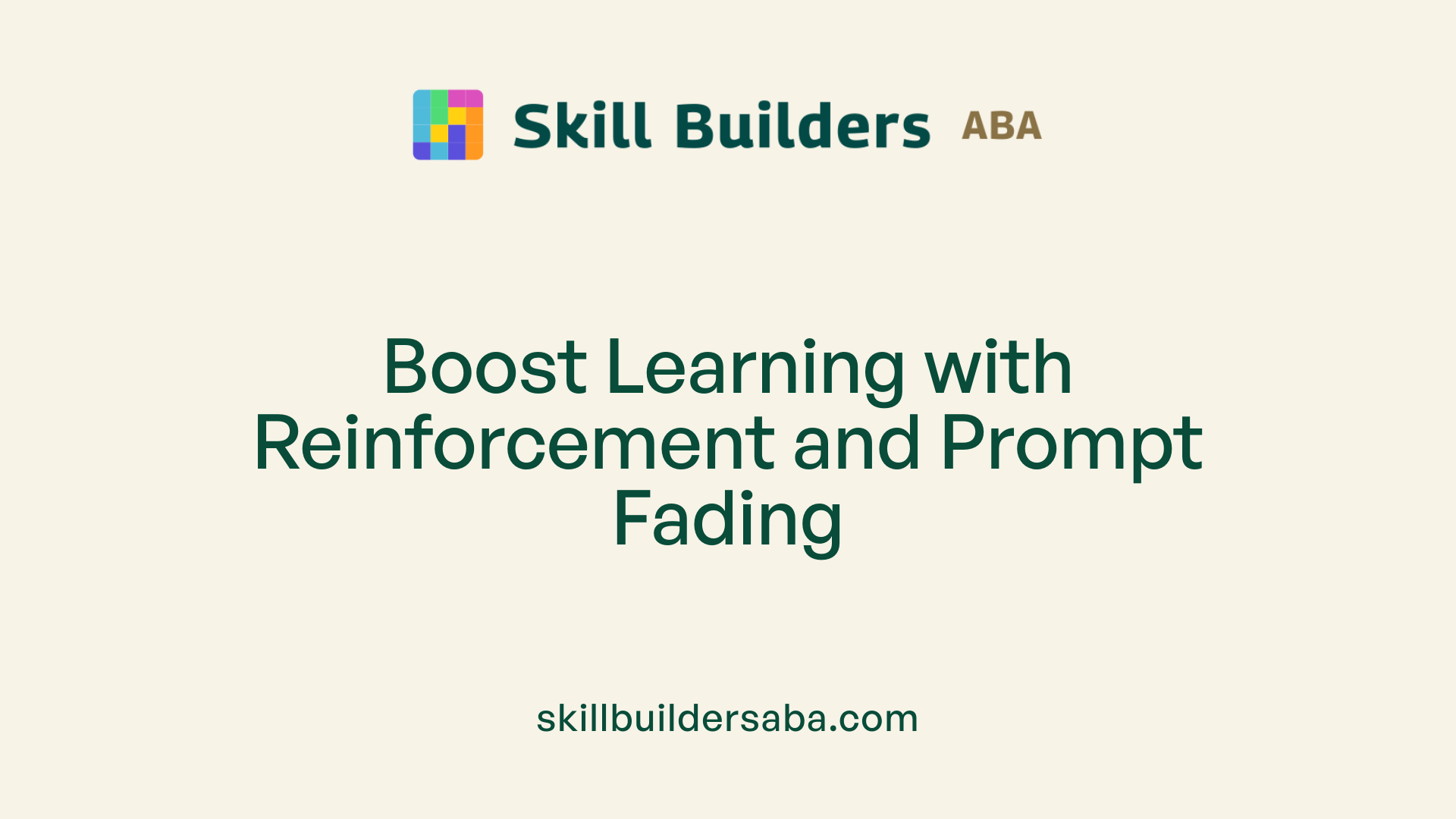
How does reinforcement improve learning?
Reinforcement plays a vital role in ABA therapy by motivating individuals to engage in and repeat desirable behaviors. When a person receives praise, rewards, or positive feedback, it encourages them to practice skills like self-care and daily routines more consistently. This positive reinforcement helps solidify new behaviors, making it more likely they will be maintained over time. It also increases the overall motivation for learning, which is crucial for progress in independence and social skills.
What is prompt fading?
Prompt fading involves gradually reducing the amount of assistance or prompts provided during skill training. Initially, prompts such as physical guidance, visual cues, or verbal hints help the learner perform the task correctly. Over time, these prompts are slowly withdrawn, encouraging the individual to complete the task independently. This process is essential for fostering true independence, as learners become less reliant on external support and more confident in executing daily living skills on their own.
Why is generalization important?
Generalization refers to the ability to transfer skills learned in one context to other settings, environments, or situations. For individuals with autism, skills learned at home might not automatically apply at school or in the community. Ensuring skills generalize across environments is crucial for real-life independence. It allows individuals to use their skills effectively in various settings, like navigating public transportation or making grocery lists, thus leading to greater self-sufficiency and improved quality of life.
| Strategy | Description | Purpose |
|---|---|---|
| Positive reinforcement | Using praise, rewards, or encouragement to motivate | Enhances learning and skill retention |
| Prompt fading | Gradually reducing prompts to promote independence | Ensures skills are performed unaided |
| Generalization | Applying learned skills across different settings | Fosters real-world application of skills |
This systematic use of reinforcement, prompt fading, and generalization techniques forms a foundation for effective ABA therapy, helping individuals develop essential daily living skills that transfer across all areas of their lives.
Role of Visual Supports and Prompts in Teaching ADLs
Use of pictures, checklists, visual schedules
Visual supports are essential tools in ABA therapy for teaching daily living skills (ADLs). They include pictures, checklists, and visual schedules that break down complex tasks into clear, manageable steps.
Pictures are used to illustrate each phase of an activity, such as brushing teeth or preparing a snack. Checklists help children keep track of what they've completed and what remains. Visual schedules organize routines to promote independence and predictability.
These visual aids serve as cues that clarify expectations, reduce confusion, and support learners with limited receptive language skills. They make learning more accessible and encourage self-directed activity.
How do visuals aid learning?
Visual supports like picture schedules and checklists clarify expectations and steps, making complex tasks manageable and promoting independence.
When should prompts be faded?
Prompts are gradually reduced as the child gains confidence and mastery in a skill. This fading process helps the learner become less reliant on external cues and encourages independent problem-solving.
Additional insights
Using visuals consistently across different environments enhances generalization. Whether at home, school, or community settings, visual supports help maintain skill fluency.
Visual supports also serve as visual reminders, motivating children to complete daily routines independently. As skills improve, caregivers and therapists fade prompts to foster self-sufficiency.
| Visual Support Type | Function | Benefit | Additional Details |
|---|---|---|---|
| Picture Schedules | Outline daily routines | Promotes independence | Used for complex activities like hygiene or chores |
| Checklists | Track task steps | Encourages self-monitoring | Useful in skill acquisition and maintenance |
| Visual Timers | Manage time in tasks | Improves time management | Supports transition skills |
In summary, visual supports and prompts are vital in ABA programs for teaching and maintaining essential daily living skills. They help children learn sequences, stay motivated, and apply skills across various settings, ultimately fostering greater independence.
Parent and Caregiver Involvement in ABA Training
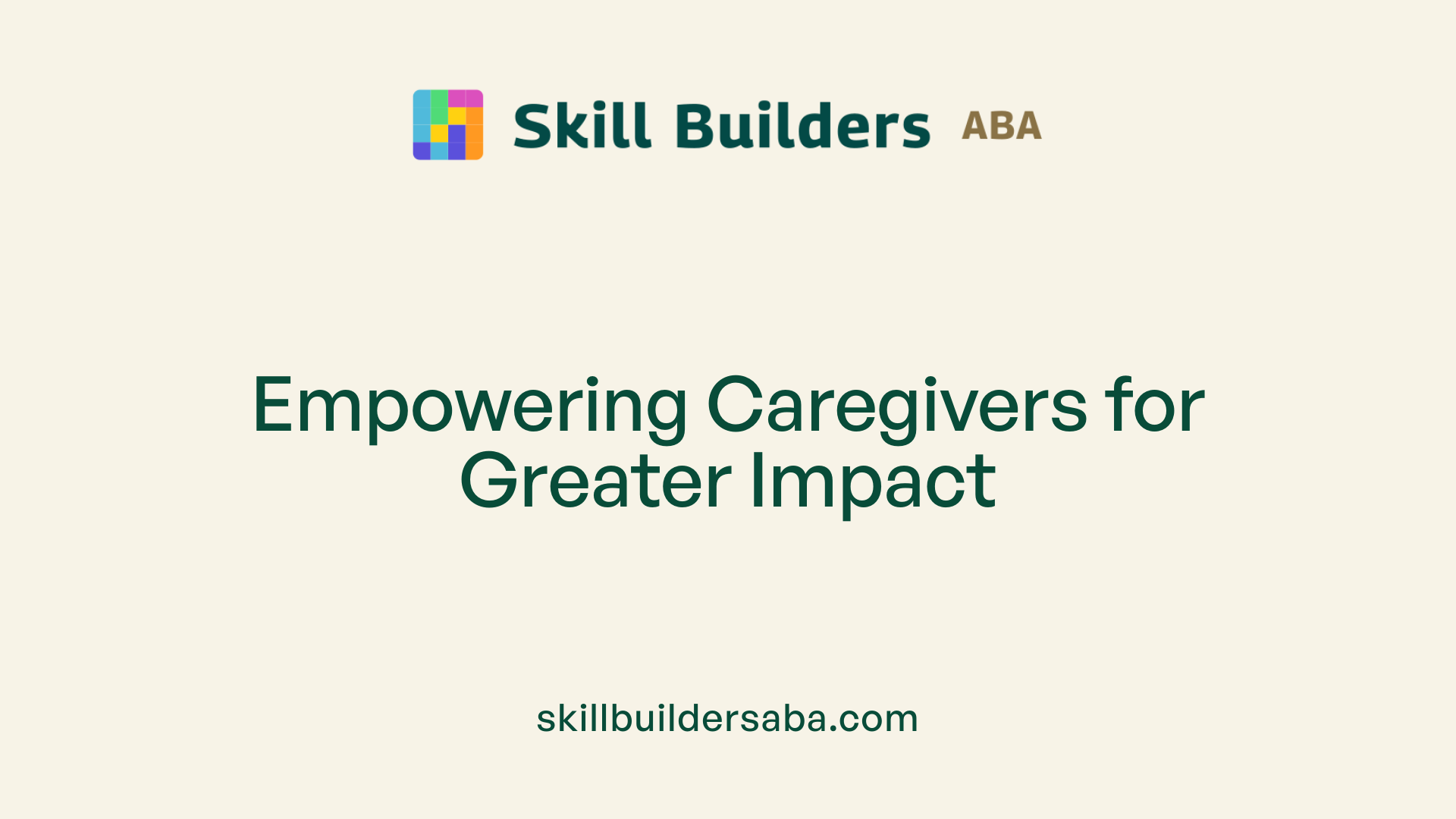
How can caregivers support skill development?
Caregivers play a crucial role in developing daily living skills for children with autism through active participation in therapy. They support skill development by modeling appropriate behaviors, providing prompts to guide correct responses, and practicing routines consistently at home, in school, and in community settings. Their involvement helps reinforce learned skills and promotes their generalization across different environments.
In addition to modeling, caregivers assist by participating in training sessions led by behavior analysts. This training equips them with the techniques necessary to use prompts effectively, apply reinforcement strategies, and utilize visual aids such as picture schedules or cue cards to support learning.
Consistency is essential for skill retention. When caregivers consistently apply learned strategies, children are more likely to internalize and generalize skills. This support not only accelerates progress but also boosts children’s confidence and independence.
What are effective training strategies for parents?
Effective parent training focuses on educating caregivers about communication techniques like prompting, providing positive reinforcement, and using visual supports. Structured training sessions demonstrate how to implement these strategies during daily routines.
Promoting ongoing practice is vital. Caregivers are encouraged to integrate skill practice into everyday activities such as dressing, mealtime, and chores. Visual aids help clarify the steps for complex tasks, making them more manageable for children.
Additionally, teaching parents to recognize and respond to their child’s cues and progress fosters a supportive environment that encourages persistent effort. When caregivers are well-trained and confident, they can ensure the consistency needed for meaningful behavioral change.
In sum, caregiver involvement using modeling, prompting, and routine practice enhances the effectiveness of ABA therapy and helps children achieve greater independence in daily living.
Benefits and Evidence Supporting ABA in Developing Daily Living Skills
Applied Behavior Analysis (ABA) is a scientific approach that effectively teaches daily living skills to individuals with autism. Numerous studies support its effectiveness, demonstrating that ABA leads to meaningful improvements across various areas.
Research indicates that ABA can significantly enhance independence in personal hygiene, dressing, eating, toileting, and household chores. By breaking down complex tasks through techniques like task analysis, prompting, chaining, and reinforcement, ABA makes these skills manageable and achievable.
Outcomes of ABA interventions include decreased stereotypic behaviors, increased communication abilities, and improved social skills. For example, children learn to navigate community environments and manage daily routines more independently.
Evidence shows that ABA programs are adaptable to each individual's needs, utilizing data-driven progress monitoring and natural environment teaching. This flexibility ensures that skills are generalized across settings such as home, school, and community.
Research supports the idea that ABA is a scientifically validated treatment, with multiple studies confirming its positive impact on intellectual functioning, language, and adaptive behaviors. This makes ABA a trusted choice for supporting individuals with autism in gaining essential daily living skills.
| Study Focus | Findings | Additional Details |
|---|---|---|
| Effectiveness of ABA | Proven improvements in daily skills | Based on multiple peer-reviewed studies |
| Behavioral Outcomes | Reduction in stereotypic behaviors | Maintained over time |
| Skill Generalization | Skills transfer across environments | Using visual supports and prompts |
| Use of Chaining | Efficient acquisition of routines | Supports complex task learning |
| Parent Involvement | Enhanced therapy outcomes | Includes training and daily practice |
Understanding the scientific backing reassures caregivers and professionals about the value of ABA, which continues to be a gold standard in teaching essential life skills to children with autism.
Teaching Community Navigation, Safety, and Additional Life Skills
How does ABA help with community navigation and safety?
ABA therapy plays a vital role in equipping individuals with essential community navigation and safety skills. Through methods like role-playing, practical exercises, and positive reinforcement, individuals learn to use public transportation confidently, identify and respond to dangerous situations, and adhere to safety rules. For instance, a child might practice crossing the street safely with visual cues and prompts, gradually becoming more independent in real-life settings.
The approach involves breaking down complex safety behaviors into manageable steps using task analysis. This structured method ensures that each component, such as recognizing street signs or asking for help, is learned thoroughly and reinforced consistently. Over time, these skills are generalized across various environments, supporting safer and more confident community participation.
What other life skills can ABA address?
In addition to community safety, ABA therapy is adaptable to developing a broad range of daily living skills essential for independence. This includes social skills like sharing, turn-taking, and understanding social cues, which are taught through structured techniques like social stories and role-playing.
Problem-solving and emotional regulation are also focal areas, where techniques such as visual aids, relaxation exercises, and scenario-based practice help learners manage their emotions and respond appropriately to unforeseen situations. Decision-making skills are fostered by teaching step-by-step strategies for everyday choices, enhancing self-reliance.
Overall, ABA's individualized approach ensures that each person acquires meaningful skills to navigate daily life confidently, ultimately improving their quality of life and fostering greater independence.
| Skill Area | Teaching Strategies | Description |
|---|---|---|
| Community Navigation | Role-playing, practical exercises | Using visual aids and real-world practice to move safely in the community |
| Safety Awareness | Task analysis, reinforcement | Recognizing hazards, following rules, and seeking help |
| Social Skills | Social stories, modeling | Sharing, turn-taking, understanding social cues |
| Emotional Regulation | Visual supports, relaxation exercises | Managing stress, handling emotions effectively |
| Problem-solving | Step-by-step instruction, scenario practice | Developing independence in handling challenges |
This comprehensive approach ensures that individuals learn to navigate the world around them safely and successfully, empowering them to live more independently.
Summary: The Power of ABA for Independent Living
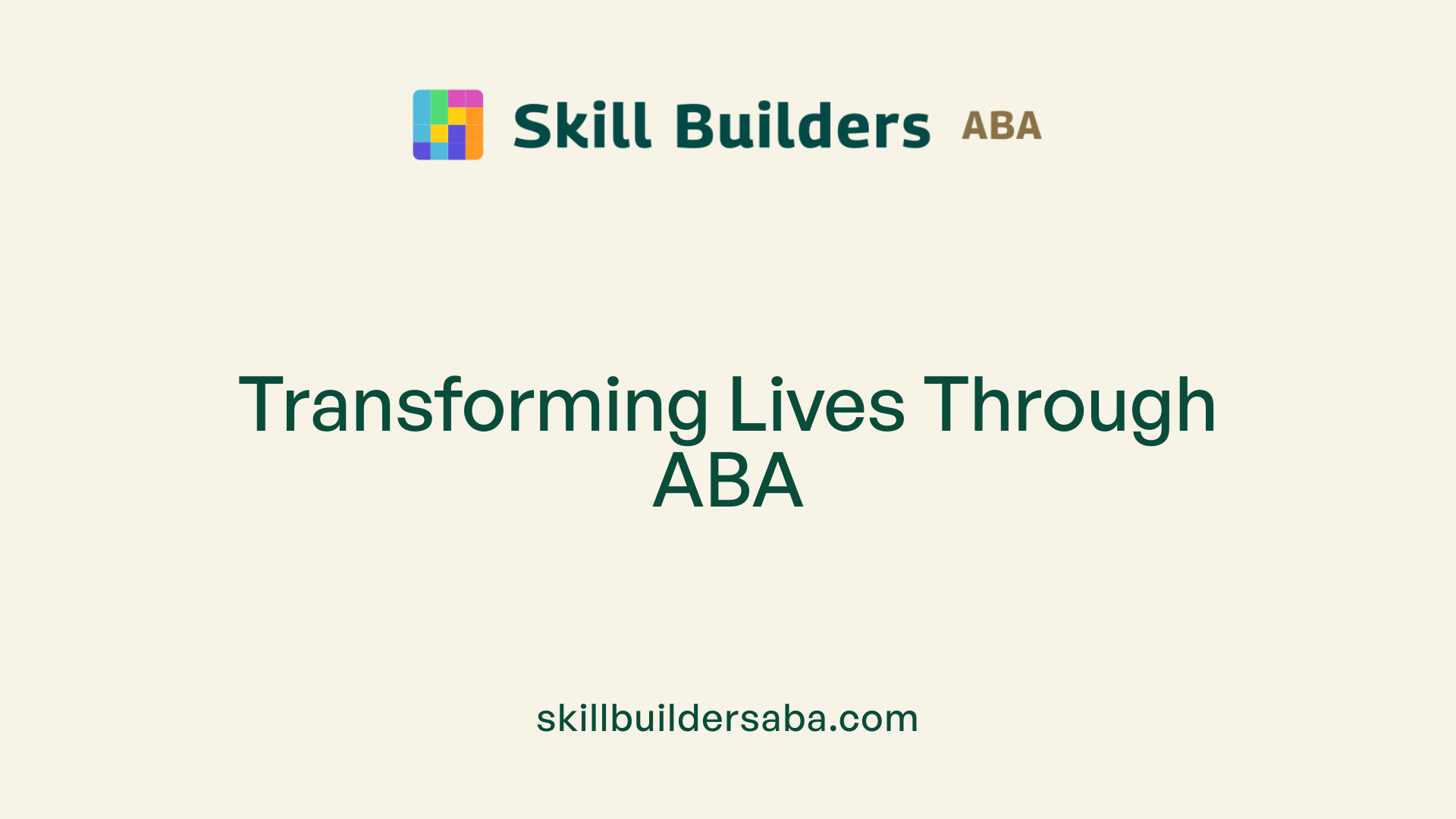 Applied Behavior Analysis (ABA) is a highly effective, evidence-based approach to fostering independence in individuals with autism. It uses structured strategies like task analysis, prompting, reinforcement, shaping, and generalization to teach daily living skills, including personal hygiene, dressing, and household chores.
Applied Behavior Analysis (ABA) is a highly effective, evidence-based approach to fostering independence in individuals with autism. It uses structured strategies like task analysis, prompting, reinforcement, shaping, and generalization to teach daily living skills, including personal hygiene, dressing, and household chores.
Assessment tools such as the ABLLS and Vineland scales help set measurable, achievable goals tailored to each person's needs. These goals focus on building skills necessary for daily routines and social interactions. The therapy involves practicing skills in natural settings—home, school, and community—using Natural Environment Teaching (NET) to make learning relevant and functional.
Caregivers play a vital role by modeling tasks, providing prompts, and participating in training sessions. Their involvement ensures consistency and promotes the transfer of learned skills across different environments. Techniques like chaining are employed to teach complex tasks, breaking them into manageable steps and reinforcing each one with praise or rewards.
Research supports ABA's effectiveness, with studies showing improvements in language, communication, social skills, and reductions in problem behaviors. ABA programs can help develop not only daily living skills but also organizational, problem-solving, and safety awareness skills, promoting overall independence.
To maximize long-term benefits, families need to actively participate in training and support ongoing practice outside therapy sessions. By doing so, they help ensure these skills are retained and generalized, fostering lifelong independence.
| Skill Area | Techniques Used | Outcomes |
|---|---|---|
| Personal Care | Visual supports, prompts, reinforcement | Independence in hygiene, dressing, grooming |
| Household Skills | Task analysis, chaining | Tasks like making beds, washing dishes |
| Communication | Discrete Trial Training (DTT), Natural Language Teaching (NLT) | Functional communication in various settings |
| Safety & Social Skills | Role-playing, social stories | Safer navigation and social interaction |
| Daily Routine Planning | Visual schedules, time management | Enhanced organization and independence |
Enhancing lifelong independence through ABA involves a systematic approach, active caregiver participation, and consistent practice across environments, paving the way for greater self-sufficiency and quality of life.
Empowering Independence Through Knowledge and Practice
ABA serves as a powerful, evidence-based approach to teaching daily living skills, enabling individuals with autism to achieve greater independence, safety, and a meaningful life. Through assessments, tailored strategies like chaining and visual supports, caregiver involvement, and consistent reinforcement, ABA fosters lifelong skills that enhance overall well-being and societal participation.
References
- How ABA Therapy Helps with Daily Living Skills
- Applied Behavior Analysis (ABA) | Autism Speaks
- Teaching daily living skills to children with autism in unsupervised ...
- 11 Tips for Teaching Activities of Daily Living - Regis College Online
- How ABA Therapy Helps Build Daily Living Skills | Dream Big
- 10 Ways ABA Therapy Can Help with Life Skills
- Chaining to Build Daily Living Skills at Fast Track ABA
- Boosting Independence: Self-Care and Daily Living Skills Through ...
- Life skills for autism | Autism Speaks
.svg)





